BYD Seal VS Mercedes Vito Transporter – Specs, Efficiency & Price Comparison
Which model is the better choice – the BYD Seal or the Mercedes Vito Transporter? We compare performance (530 HP vs 237 HP), boot capacity (400 L vs ), efficiency (16.60 kWh vs 20.70 kWh6.80 L), and of course, the price (38600 £ vs 30600 £).
Find out now which car fits your needs better!
The BYD Seal (Sedan) is powered by a Electric engine and comes with a Automatic transmission. In comparison, the Mercedes Vito Transporter (Cargo Van) features a Diesel or Electric engine and a Manuel or Automatic gearbox.
When it comes to boot capacity, the BYD Seal offers 400 L, while the Mercedes Vito Transporter provides – depending on what matters most to you. If you’re looking for more power, you’ll need to decide whether the 530 HP of the BYD Seal or the 237 HP of the Mercedes Vito Transporter suits your needs better.
There are also differences in efficiency: 16.60 kWh vs 20.70 kWh6.80 L. In terms of price, the BYD Seal starts at 38600 £, while the Mercedes Vito Transporter is available from 30600 £.
Compare all the key specs now and find out which model fits your lifestyle best!
In this comparison, the BYD Seal showcases its impressive electric performance and modern design, appealing to eco-conscious drivers seeking cutting-edge technology. On the other hand, the Mercedes Vito Transporter stands out with its robust build and versatile cargo options, making it a top choice for businesses requiring reliability and spaciousness. Ultimately, the decision between these two vehicles hinges on whether one prioritizes sustainability or practicality in transportation.
BYD Seal
The BYD Seal represents a sleek fusion of innovative technology and stylish design, setting it apart in the competitive electric vehicle market. With its aerodynamic silhouette and premium interior finishes, the car offers a driving experience that is both comfortable and exhilarating. Enthusiasts are particularly impressed by the seamless integration of advanced features that prioritise safety and convenience.
details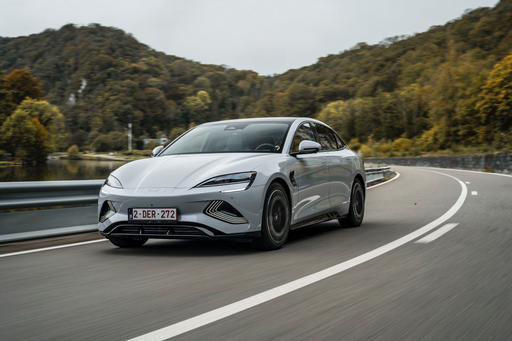 @ press.bydauto.be
@ press.bydauto.be
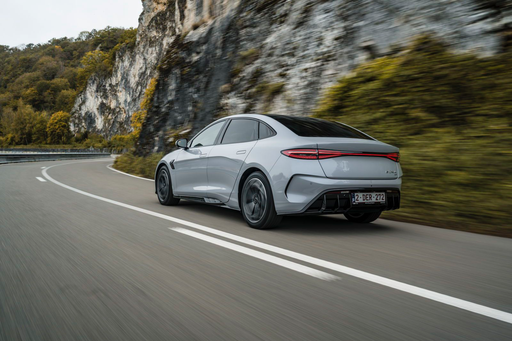 @ press.bydauto.be
@ press.bydauto.be
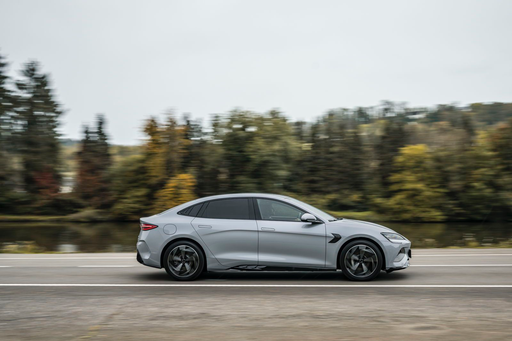 @ press.bydauto.be
@ press.bydauto.be
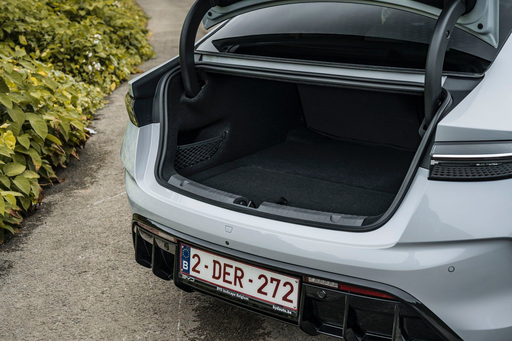 @ press.bydauto.be
@ press.bydauto.be
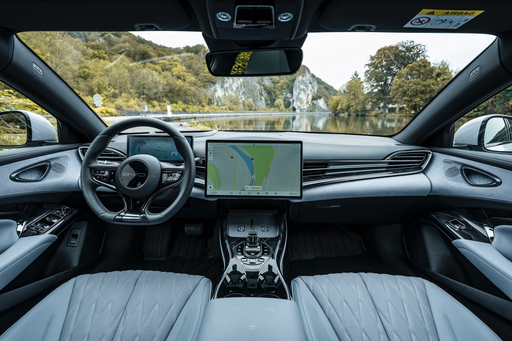 @ press.bydauto.be
@ press.bydauto.be
Mercedes Vito Transporter
The Mercedes-Benz Vito Transporter combines practicality with the refined elegance characteristic of its brand. Known for its robust performance, this vehicle offers an impressively versatile interior space, making it ideal for both commercial use and everyday driving. The advanced safety features and modern technological enhancements ensure that the Vito remains a reliable and comfortable choice for drivers.
details @ mercedes-benz.at
@ mercedes-benz.at
The automotive market is witnessing an exciting clash between innovative electric mobility and traditional utility. In this comparison, we take a detailed look at the BYD Seal and the Mercedes Vito Transporter, examining their technical specifications, performance, and innovative features that define their respective classes.
An Overview of the Competitors
The BYD Seal is a sleek electric sedan designed for maximum efficiency and performance, aiming to attract drivers seeking a modern EV experience. On the other hand, the Mercedes Vito Transporter, a versatile cargo van, leads in practicality for businesses and larger payloads while providing options for both diesel and electric powertrains.
Powertrain and Performance
Starting with the BYD Seal, it offers two powerful electric variants. The standard model produces up to 313 hp, while the high-performance variant impressively outputs 530 hp. With a rear-wheel drive (RWD) option available, the Seal accelerates from 0-100 km/h in just 5.9 seconds, and the performance model slashes this time to an exhilarating 3.8 seconds. The torque figures of up to 670 Nm ensure robust acceleration and a thrilling driving experience.
In contrast, the Mercedes Vito Transporter provides multiple diesel and electric configurations, with power outputs ranging from 102 hp to 237 hp. The Vito’s diesel engines strike a balance of efficiency and performance, achieving fuel consumption figures as low as 6.8 L/100 km. The electric variant, while slightly less powerful, boasts an electric range of up to 313 km, making it ideal for urban deliveries.
Range and Efficiency
The BYD Seal excels in electric range, offering between 520 to 570 km on a single charge with an energy consumption of 16.6 to 18.2 kWh/100 km. This efficiency not only supports daily commuting but also long drives without frequent charging stops.
The Mercedes Vito Transporter, while not as admirable in range, compensates with a respectable electric range of approximately 310 km. However, its diesel variants remain competitive with lower operating costs for businesses prioritizing fuel efficiency over all-electric power. The consumption rates for the Vito vary, starting at 6.8 L/100 km, showcasing its capability to serve both city and highway needs effectively.
Interior and Practicality
Inside, the BYD Seal is designed for comfort, offering seating for five, quality materials, and advanced infotainment systems that cater to modern tech-savvy drivers. The 400 liters of trunk capacity ensures adequate space for personal belongings, while its spacious interior enhances the overall driving experience.
In stark contrast, the Mercedes Vito Transporter shines with its utilitarian design, allowing for seating configurations of up to five, depending on the model. With an impressive payload capacity of up to 1000 kg, it stands out as a workhorse for businesses requiring maximum capability. The interior is rugged yet functional, tailored to accommodate various tools and packages needed for transportation.
Safety and Innovations
Both the BYD Seal and the Mercedes Vito Transporter incorporate advanced safety features. The Seal includes a suite of driver-assistance technologies to enhance passenger safety and overall driving discretion. Features such as adaptive cruise control, lane departure warning, and automatic emergency braking are standard, aligning with modern safety standards.
The Vito Transporter, being a commercial vehicle, includes practical safety systems like parking assist and stability control that make everyday operation easier. It also boasts high structural integrity, ensuring passenger and cargo safety during transit.
Conclusion: A Battle of Innovation and Practicality
In summation, the choice between the BYD Seal and the Mercedes Vito Transporter ultimately depends on the buyer's needs. For drivers seeking a dynamic, efficient, and technologically advanced sedan, the BYD Seal certainly stands out as the ideal choice. Conversely, for businesses in need of a reliable, capable van that balances performance and utility, the Mercedes Vito Transporter remains unparalleled. Both vehicles showcase the direction of modern automotive innovation, blending efficiency with performance across different market segments.

|

|
|
|
|
Costs and Consumption |
|
|---|---|
|
Price
38600 - 43700 £
|
Price
30600 - 54700 £
|
|
Consumption L/100km
-
|
Consumption L/100km
6.8 - 7.9 L
|
|
Consumption kWh/100km
16.6 - 18.2 kWh
|
Consumption kWh/100km
20.7 - 21.1 kWh
|
|
Electric Range
520 - 570 km
|
Electric Range
310 - 313 km
|
|
Battery Capacity
-
|
Battery Capacity
60 kWh
|
|
co2
0 g/km
|
co2
0 - 206 g/km
|
|
Fuel tank capacity
-
|
Fuel tank capacity
57 - 70 L
|
Dimensions and Body |
|
|---|---|
|
Body Type
Sedan
|
Body Type
Cargo Van
|
|
Seats
5
|
Seats
2 - 5
|
|
Doors
4
|
Doors
4
|
|
Curb weight
2055 - 2185 kg
|
Curb weight
1800 - 2347 kg
|
|
Trunk capacity
400 L
|
Trunk capacity
-
|
|
Length
4800 mm
|
Length
4895 - 5370 mm
|
|
Width
1875 mm
|
Width
1928 mm
|
|
Height
1460 mm
|
Height
1910 - 1945 mm
|
|
Payload
446 kg
|
Payload
849 - 1000 kg
|
Engine and Performance |
|
|---|---|
|
Engine Type
Electric
|
Engine Type
Diesel, Electric
|
|
Transmission
Automatic
|
Transmission
Manuel, Automatic
|
|
Transmission Detail
Reduction Gearbox
|
Transmission Detail
Manual Gearbox, Reduction Gearbox, Automatic Gearbox
|
|
Drive Type
Rear-Wheel Drive, All-Wheel Drive
|
Drive Type
Rear-Wheel Drive, Front-Wheel Drive, All-Wheel Drive
|
|
Power HP
313 - 530 HP
|
Power HP
102 - 237 HP
|
|
Acceleration 0-100km/h
3.8 - 5.9 s
|
Acceleration 0-100km/h
-
|
|
Max Speed
180 km/h
|
Max Speed
120 km/h
|
|
Torque
360 - 670 Nm
|
Torque
270 - 500 Nm
|
|
Number of Cylinders
-
|
Number of Cylinders
4
|
|
Power kW
230 - 390 kW
|
Power kW
75 - 174 kW
|
|
Engine capacity
-
|
Engine capacity
1950 cm3
|
General |
|
|---|---|
|
Model Year
2023
|
Model Year
2024
|
|
CO2 Efficiency Class
A
|
CO2 Efficiency Class
G, A
|
|
Brand
BYD
|
Brand
Mercedes-Benz
|
BYD Seal
The BYD Seal: An Electrifying Presence on the Road
Amidst the growing popularity of electric vehicles (EVs), the BYD Seal stands out as a compelling choice. With its sleek saloon design and a plethora of cutting-edge features, this model holds its own in the competitive market of eco-conscious automobiles.
Technical Specs that Speak Volumes
The BYD Seal comes in two key variants, each offering a distinct driving experience yet retaining a common emphasis on performance and efficiency. The power output ranges from a robust 313 PS to an exhilarating 530 PS, ensuring that whether you choose the rear-wheel drive or the all-wheel-drive option, you won't be short of thrills.
Performance enthusiasts will also appreciate the remarkable acceleration capabilities; the Seal can go from 0 to 100 km/h in as little as 3.8 seconds. Complementing its acceleration is its astounding maximum torque, reaching up to 670 Nm, making it adept at handling various driving conditions.
Efficiency Meets Innovation
BYD has engineered the Seal to optimise energy consumption without compromising on performance. The car boasts a commendable energy consumption range of 16.6 - 18.2 kWh/100km, reflecting its efficiency-focused design. Coupled with an impressive electric range of up to 570 km, the Seal is poised for longer journeys without frequent recharging interruptions.
Design and Comfort
The BYD Seal's aesthetic appeal is underscored by its sleek saloon body and precise dimensions: 4800 mm in length, 1875 mm in width, and standing at a height of 1460 mm. These dimensions create a dynamic yet spacious presence on the road, ensuring both an aerodynamic performance and a comfortable interior for up to five passengers.
Inside, the Seal is designed with driver and passenger comfort in mind, featuring a well-crafted interior and advanced technology to enhance the driving experience. The boot offers 400 litres of space, catering to practical needs without compromising on style.
Innovative Features for a Modern Drive
The Seal doesn’t just rely on its electric credentials to make an impact. BYD integrates a host of modern technologies and safety features, ensuring that the driving experience is both innovative and secure. The inclusion of a single-speed reduction gear contributes to a smooth driving experience, enabling efficient transitions in speed.
Safety is further assured with the Seal's high CO2 efficiency rating of class A, underlining its efficacy as a sustainable mode of transport that does not contribute to emissions. Given these progressive features, it's clear that the BYD Seal aligns with the evolving expectations of modern drivers looking for an eco-friendly yet high-performing vehicle.
Conclusion: Future-Ready Efficiency
With a competitive price range starting from €44,990, the BYD Seal represents excellent value for those seeking a blend of performance, efficiency, and modern technology. As sustainable transportation becomes a priority globally, the Seal positions itself as a pioneering force in the electric vehicle market, offering a future-ready driving solution that can meet the needs of today's discerning car buyers.
Mercedes Vito Transporter
Introducing the Versatile Mercedes-Benz Vito Transporter
The Mercedes-Benz Vito Transporter has long set the standard for practicality and innovation in the commercial vehicle market. By combining robust engineering with state-of-the-art technology, the Vito Transporter is perfectly suited to meet the diverse needs of today's businesses. With a range of body styles, powertrains, and interior configurations, this vehicle is truly designed to be the perfect partner in productivity.
Powertrain Options: Flexibility at its Finest
The Vito Transporter comes with an impressive array of powertrain options to suit any business requirement. From traditional diesel engines to electric powertrains, Mercedes-Benz ensures maximum efficiency and performance. Diesel options range from 102 to 237 horsepower, offering both manual and automatic transmission systems, while the electric models provide impressive efficiency with up to 313 km of range on a single charge.
Interior and Cargo Space: Tailored to Your Needs
The interior of the Vito Transporter has been meticulously designed to offer functionality without sacrificing comfort. Depending on the model, it accommodates between two to five seats, providing ample room for passengers and cargo alike. With a maximum load capacity of up to 1000 kg, the Vito is as capable of transporting heavy goods as it is of carrying a full crew.
Advanced Features: Beyond the Essential
With innovation at its core, the Vito Transporter is equipped with cutting-edge technology to enhance both driver experience and safety. The model offers a suite of advanced safety features including active brake assist, attention assist, and crosswind assist, ensuring every journey is as safe as it is smooth. Additionally, the optional MBUX multimedia system brings an intuitive touch interface and voice control to the driving experience.
Efficiency and Emissions: A Commitment to Sustainability
The Vito Transporter showcases Mercedes-Benz's commitment to sustainability through fuel-efficient engines and its all-electric offerings. Diesel variants offer CO2 emissions efficiency ranging from 178 to 206 g/km, while the electric Vito model eliminates tailpipe emissions entirely. This drives not only eco-friendly business practices but also cost savings over time with reduced fuel consumption.
Conclusion: A Reliable Partner for Every Business
Ultimately, the Mercedes-Benz Vito Transporter is more than just a vehicle; it is a reliable business partner that adapts to meet the challenges of various industries. By blending robust design with innovative technology, it delivers exceptional performance and utility. Whether you require efficient diesel fuel economy or zero-emission electrification, the Vito Transporter is a versatile choice to handle any task with ease.
The prices and data displayed are estimates based on German list prices and may vary by country. This information is not legally binding.
